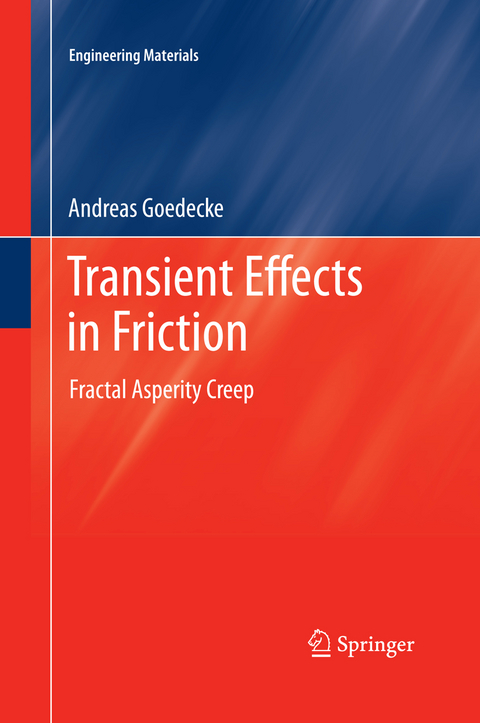
Transient Effects in Friction
Fractal Asperity Creep
Seiten
2015
Springer Wien (Verlag)
9783709116869 (ISBN)
Springer Wien (Verlag)
9783709116869 (ISBN)
Approaching transient friction effects by deriving the behavior of macroscopic friction surfaces from microscopic surface physics, this book proposes and demonstrates a multi-scale iteration for calculating the time-dependent real contact between two bodies.
Transient friction effects determine the behavior of a wide class of mechatronic systems. Classic examples are squealing brakes, stiction in robotic arms, or stick-slip in linear drives. To properly design and understand mechatronic systems of this type, good quantitative models of transient friction effects are of primary interest. The theory developed in this book approaches this problem bottom-up, by deriving the behavior of macroscopic friction surfaces from the microscopic surface physics. The model is based on two assumptions: First, rough surfaces are inherently fractal, exhibiting roughness on a wide range of scales. Second, transient friction effects are caused by creep enlargement of the real area of contact between two bodies. This work demonstrates the results of extensive Finite Element analyses of the creep behavior of surface asperities, and proposes a generalized multi-scale area iteration for calculating the time-dependent real contact between two bodies. The toolset is then demonstrated both for the reproduction of a variety of experimental results on transient friction as well as for system simulations of two example systems.
Transient friction effects determine the behavior of a wide class of mechatronic systems. Classic examples are squealing brakes, stiction in robotic arms, or stick-slip in linear drives. To properly design and understand mechatronic systems of this type, good quantitative models of transient friction effects are of primary interest. The theory developed in this book approaches this problem bottom-up, by deriving the behavior of macroscopic friction surfaces from the microscopic surface physics. The model is based on two assumptions: First, rough surfaces are inherently fractal, exhibiting roughness on a wide range of scales. Second, transient friction effects are caused by creep enlargement of the real area of contact between two bodies. This work demonstrates the results of extensive Finite Element analyses of the creep behavior of surface asperities, and proposes a generalized multi-scale area iteration for calculating the time-dependent real contact between two bodies. The toolset is then demonstrated both for the reproduction of a variety of experimental results on transient friction as well as for system simulations of two example systems.
Asperity creep under constant displacement.- Asperity creep under constant force.- Generalized junction model.- Fractal surface model.- The MIMEAC contact model.- Discussion and outlook.
| Erscheint lt. Verlag | 19.5.2015 |
|---|---|
| Reihe/Serie | Engineering Materials |
| Zusatzinfo | XV, 197 p. |
| Verlagsort | Vienna |
| Sprache | englisch |
| Maße | 155 x 235 mm |
| Gewicht | 338 g |
| Themenwelt | Mathematik / Informatik ► Mathematik ► Wahrscheinlichkeit / Kombinatorik |
| Naturwissenschaften ► Chemie ► Physikalische Chemie | |
| Technik ► Elektrotechnik / Energietechnik | |
| Technik ► Maschinenbau | |
| Schlagworte | Creep Behavior of Surface Asperities • rough surfaces • transient friction |
| ISBN-13 | 9783709116869 / 9783709116869 |
| Zustand | Neuware |
| Informationen gemäß Produktsicherheitsverordnung (GPSR) | |
| Haben Sie eine Frage zum Produkt? |
Mehr entdecken
aus dem Bereich
aus dem Bereich
Stochastik: von Abweichungen bis Zufall
Buch | Softcover (2025)
De Gruyter (Verlag)
CHF 48,90
Buch | Softcover (2024)
Springer Spektrum (Verlag)
CHF 69,95


